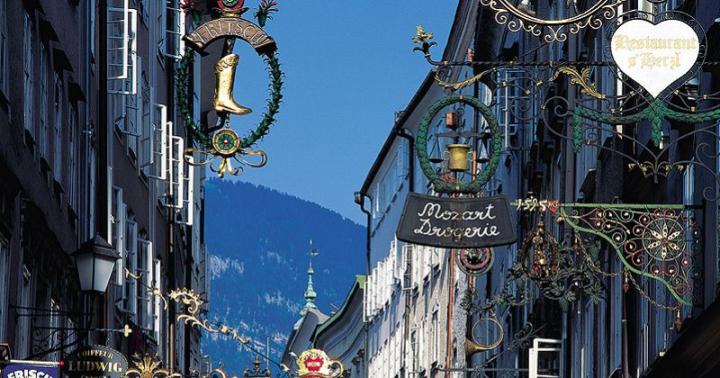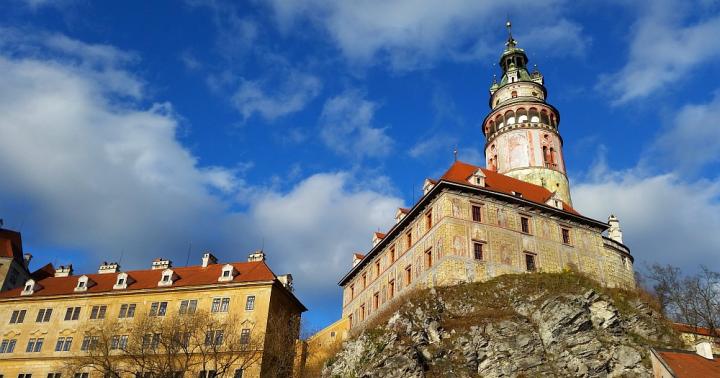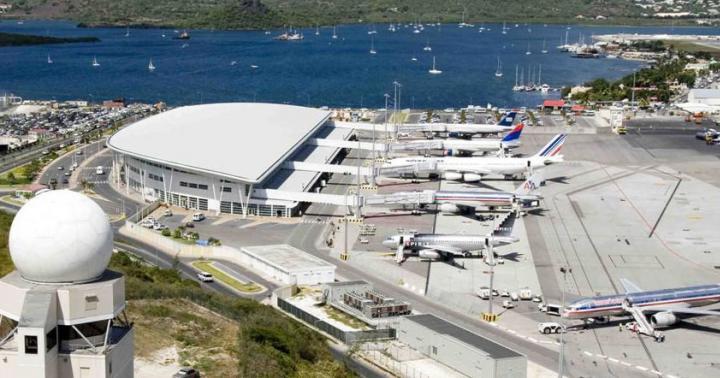Del Este - national park in the Dominican Republic, located in the very southeast of the island of Saona. Here you will find the most unusual species of plants and animals, as well as historical sights. Parque Del Este includes beautiful island Saona, which is visible from the southern shore. The park can be explored on foot or by boat, but is not at all suitable for others Vehicle. The park is home to endangered species such as West Indian manatees, sea turtles, bottlenose dolphins, as well as rhinoceroses, iguanas and hedgehog rats. In the territory of Del Este there are places of Taino settlements.
For bird lovers this is a paradise: vast territory The park is home to 112 species of birds. Some of them are unique, such as white-headed gulls and lizard cuckoos. Whale migrations can be seen in the surrounding waters in January and February and are also home to manatees, large gray aquatic mammals also called sea cows. The manatee's closest land relative is the elephant.
While spending your vacation in the Dominican Republic, you don’t have to spend all your time lying on the beach or sitting in a bar tasting local rum and cigars. Despite the fact that there are practically no architectural and historical attractions in the Dominican Republic, there are several magnificent national parks and nature reserves. Only 10% of the territory of the republic is given over to natural reserves, but, nevertheless, these protected areas are literally teeming with animals and amaze with the diversity of flora.
Parque Nacional del Este
Perhaps the most popular in the Dominican Republic is Del Este National Park, located in the southeastern part of the country. It covers an area of about 310 square kilometers and it also includes the island of Saona. This park is created for true connoisseurs wildlife, since more than 112 species of birds live in the forests, some of them, by the way, are endemic, that is, found only here and nowhere else. By the way, in this national park there are no roads or paths that would lead to the most remote areas of the park, so determined tourists who want to explore all the protected corners of Del Este will need to rent a boat in the town of Bayahibe, not far from the park. When traveling, you should be especially attentive and careful, as Del Este National Park is home to many tarantulas and wasps, which can turn the trip into real torture. That is why, before a walk in the park, you should generously apply repellent to your skin and avoid any spiders you encounter along the way.
The most popular part of this national park of the Dominican Republic is Saona Island near south coast Haiti. At one time, the island was known as an untouched corner of virgin nature, but now the flow of tourists has grown so much that only memories of the former idyll remain. In any case, this place is worth a visit. The beaches of Saona Island will allow travelers to briefly feel like Robinson Crusoe, and walking along the snow-white beach in the direction of mangroves and swamps, you can reach two small fishing villages lost in the forests. The easiest way to get to this island is by boat from the town of Bayahibe, where before the trip it will be useful to take care of a supply of drinking water and food. There is only one restaurant on the island, which is known for its exorbitant prices and food of dubious quality.
In Del Este National Park in the Dominican Republic, tourists will also be interested in seeing traces of the disappeared Taino Indian community that inhabited the island before its discovery by Columbus. During excavations at La Aleta, many interesting finds were discovered. In addition, it is known that the entire Indian settlement was destroyed, and this terrible story began with the fact that the leader Indian tribe was torn to pieces by the dogs of the Spanish colonialists. In response, the Indians tripled their revolt, to which the Spaniards responded by killing 7,000 people.

Los Haitises National Park
Another national park of the Dominican Republic called Los Haitises, located on south coast Samana Bay. This area can only be explored by boat, as without it you will not be able to reach most parts of the park. Most The territory is occupied by mangrove swamps, in which dozens of secret Indian caves are securely hidden. Now they serve as excellent refuges for birds and sea animals. Only a small part of the park is currently available for tourists to visit, where they spend organized excursions- You will not be able to explore this reserve on your own. By the way, for those who do not like dampness, it is better to avoid such a walk, since Los Haitises is located in the wettest region of the Dominican Republic.
The standard tour that is offered in this park is called Ruta Litoral, and its route includes most of the attractions. During such a walk, tourists will visit big cave, where it was preserved rock paintings Taino Indians, the former refuge of the legendary filibuster Willie Simons, Remington and San Gabriel caves, on the walls of which you can see images of Indian faces. By the way, they say that at one time pirates and the infamous John Rackham lived here. The journey through this park ends with a stop near the Cueva de la Linea cave. Once upon a time they wanted to build here railway station, in order to send sugar cane, which grew here in countless quantities, to other regions of the country. However, the station was never built, and reed has not grown here for a long time.
You can arrange a trip to Los Haitises National Park in the town of Sabana de la Mar. As a rule, the boat is ready to take no more than six people on board and such a trip will cost about 800 pesos (about 630 rubles). A visit to the park will cost another 50 pesos (about 40 rubles), and a guide’s services will cost 300 pesos (about 235 rubles). Tourists can arrange for the services of a guide at the park administration, which is located in the city port.
National Parks of Armando Bermudez and Jose del Carmen Ramirez
These two Dominican national parks are usually mentioned together because they are so close to each other. The parks were founded in the middle of the last century in order to save tropical forests from mass deforestation, as happened in Haiti. These national parks contain the highest elevations Caribbean Islands mountain peaks that have become a favorite destination for tourists who love hiking, climbing and similar trips.

The Armando Bermudez and José Ramirez parks are located at a significant altitude, so the weather in this part of the Dominican Republic is quite unpredictable. In summer it is quite comfortable here (about + 20 degrees Celsius), while in the winter months the temperature drops to minus values. Moreover, there is almost all year round It rains, so when going here, tourists should definitely take raincoats and waterproof shoes with them.
You can get to the popular Mount Duarte, located in protected areas, along one of five trails, while the most famous and easiest is La Cienega. Each trail begins in a small town or village at the base of the mountain, where hikers will be required to purchase a park permit and arrange for a guide. Under no circumstances should you try to explore the parks on your own - even the most experienced hikers can get lost in these forests. In addition, I’m going to conquer Mount Duarte, I should remember that, despite the low altitude, the climb to the top is a rather serious challenge. The reason for this is the terrible quality of the path - fallen trees and boulders are usually removed from it, but deep potholes and ruts are quite standard phenomena. That is why, when going to the top of Duarte, you only need to wear well-fitted hiking boots, which will not only protect you from bruises and dislocations, but will also allow you to feel more stable on loose soil and slippery roads. As a rule, the ascent takes two days and another half a day is spent on preparation, so it is better to arrive in La Cienega in the afternoon in order to have time to resolve all paperwork for a visit to the park, and begin the ascent early in the morning. Before arriving, tourists also need to take care of supplies of water and food for the duration of the trip - there is no market or necessary shops in the village.
While climbing to the top of the mountain, tourists will pass such interesting places as the huge Lake Enriquillo, more than 40 kilometers long. It is known for the fact that the water in it is three times saltier than sea water due to constant evaporation, which is why swimming in it is not particularly pleasant, but it will be interesting to see. Moreover, this lake is the lowest point in the entire Dominican Republic. One more interesting place On the territory of national parks there is a secret refuge of an Indian chief. It is located in one of the caves near Poster Rio. The island of Cabritos (“goat island”), the largest of the islands on the lake, also deserves attention. Here you can see crocodiles, huge iguanas and colonies of magnificent pink flamingos. Every day at 07.30, 08.30 and 13.00 boats sail to this island excursion groups. Travel time is about 45 minutes, and the cost of travel depends on the number of tourists.
Jaragua National Park
Finally, the largest in the entire Dominican Republic and the most attractive for lovers of deserted beaches is the Jaragua National Park. It is located in the southern part of the Baoruco Peninsula and also includes the two islets of Beata and Alto Velo. A special feature of this place, among other things, is that visiting the park is only possible with a guide, and permission to visit can only be obtained from the General Directorate of National Parks in Santo Domingo. Jaragua National Park will be a real paradise for wildlife lovers. Cacti and palm trees grow here in abundance, rare turtles and many beautiful endemic birds are found.

Most often, excursions around the park start in the city of Pedernales, where you can also take a boat to the nearest islands, a trip to which, by the way, will cost a substantial amount. However, once on the islands, tourists will understand that the money was well spent. Beata only at first glance seems like an uninhabited island, but upon landing on the southern coast, travelers will be able to explore numerous caves, the walls of which are decorated with ancient Indian paintings. The island of Alto Velo, in turn, is famous for the fact that it was here that scientists discovered the smallest lizard in the world - a dwarf gecko measuring one and a half centimeters in size.
By the way, it is worth keeping in mind that those who suffer from seasickness should avoid traveling through this national park. The fact is that the journey can take from three to five hours and even hardy travelers will find it quite exhausting. In addition, just in case, you should personally make sure that the captain of the ship has filled in enough fuel, since otherwise there is a real chance of staying in this paradise for a long time. As for obtaining permits, they are issued by the National Parks Directorate. You need to allocate at least one day to obtain the necessary papers, since paperwork in Dominican institutions is a completely normal phenomenon. You can also negotiate with the same administration about the services of a guide, without whom access to the park is prohibited and dangerous.
Del Este National Park in extreme point southeast of the Dominican Republic. The park is the main natural attraction of the country. The park's territory is quite large - it covers a large peninsula and the island of Saona, adjacent to it. Here, lovers of travel and adventure, as well as true connoisseurs of relaxation in the lap of pristine nature, will get the greatest pleasure.
A small number of limestone terraces, completely covered with subtropical forests, constitute the mainland part of the reserve. Local soils are very porous and easily absorb moisture, since there are practically no lakes or rivers here. Therefore, mainly deciduous trees grow in this part of the park. Animal world in the Dominican Republic is not very diverse, but Parque del Este has all the native species of mammals, including rare, endangered species.
The coast of the park is a rare example of the diversity of landscapes of the Dominican Republic. Mangroves and steep cliffs alternate here. Near the shore, if you are lucky enough, you can find bottlenose dolphins and very rare Caribbean manatees. The western coast of the park is occupied by beaches with crystal clear water and very beautiful coral reefs - a dream for diving enthusiasts. 




Parque Nacional del Este is located in the east of the Dominican Republic and covers an area of 430 km2. Del Este National Park includes part of the water area Caribbean Sea and the mainland, including the famous island of Saona. Boats and speedboats depart from the village of Bayahibe to Saona Island if you decide to go on a sightseeing tour of the island on your own. The mainland part of the park is of great interest for tourists to explore, as it contains a large number of limestone caves, hills and depressions-wells, formed by rain over millions of years in soft limestone rocks. These are entire cave complexes that contain traces of the culture of the indigenous inhabitants. On the walls of many caves, drawings and pictograms made by the hand of the Taino Indians have survived to this day. Since the soil of the park is very porous (limestone), you will not see any rivers, streams, or lakes in the territory. For this reason, deciduous trees grow in large numbers, including wild olives, mahogany and guaiac wood. The park has pronounced natural areas: dry subtropical jungle and arid forests

The fauna of the park area, in comparison with the large variety of birds and plants, is unusually poor. Here you can find all kinds of mammals, including the prehensile-tailed hutia (a rodent the size of a cat), the slittooth (a small animal with a narrow face that secretes poisonous saliva).

The coastline of the park is heterogeneous: the sheer cliffs hanging menacingly on the eastern side of the peninsula turn into the mangroves of Calderas Bay in the south. The western side of the park delights tourists and divers with its quiet beaches, coral reefs and clear waters of the Caribbean Sea.

The park's waters are rich in populations of manati and dolphins. Manatee, very similar to manatees, have thick skin covered with bristly hair and extremely developed lungs. They do not live at great depths, they are found even in large rivers and lakes, and penetrate there through the mouths of rivers. The main food of manati is freshwater and marine plants. Fishermen often hunt for manatya, as their meat has good taste and valuable fat.

The eastern entrance to the park is at the village of Boca del Yuma: the trail goes along the coast and ends at mangrove swamps. The park's western entrance and local office are located in the village of Bayahibe.





